| This content applies solely to Connected Servicing, which must be purchased separately from the Appian base platform. |
What's New?Copy link to clipboard
The Connected Servicing 2.5 release notes provide an overview of the latest changes and improvements to the Connected Servicing Solution. These new features and improved capabilities were designed with best practices in mind.
Enhanced and Simplified Secure Customer SiteCopy link to clipboard
Previously, Appian Connected Onboarding and Connected Servicing included a secure Customer Portal site, which allowed institutions to assign onboarding and service request tasks to their end customers to complete securely from within the site. Logged-in end customers could also create and schedule service requests on the secure site.
This release replaces the former Customer Portal site with an enhanced and simplified secure Customer Site add-on application.
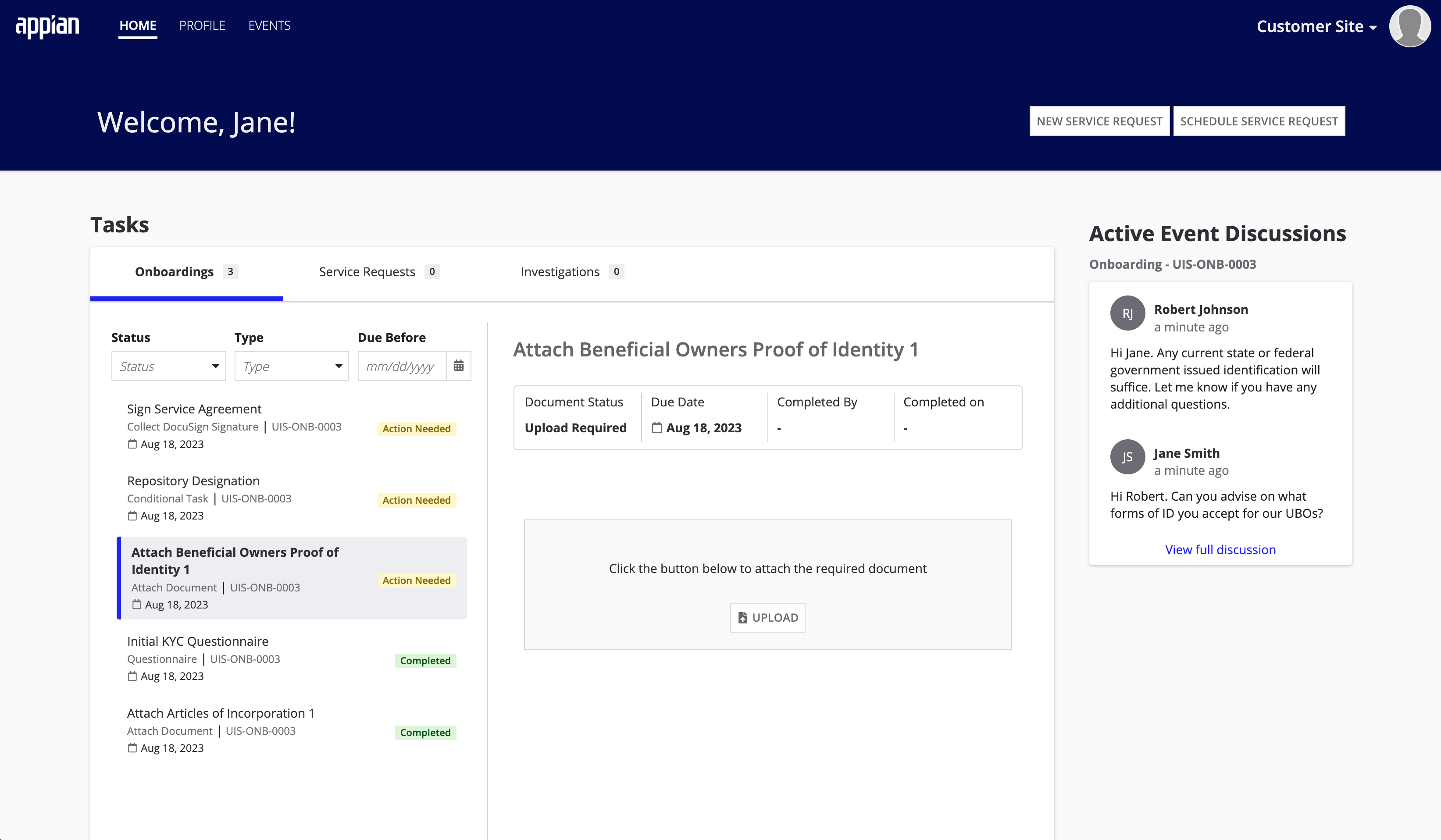
We've enhanced the new Customer Site to interact with the full suite of Appian Customer Lifecycle Management solutions, which includes Connected KYC.
This release simplifies the Customer Site content organization to just three pages:
- HOME: Focuses your end customers on tasks requiring immediate attention. In addition, it showcases in-app discussion capability with your financial institution that keeps onboardings, service requests, and KYC investigations progressing smoothly.
- PROFILE: Displays key customer details, beneficial owners, entity relationships, and documents.
- EVENTS: Provides a complete history of onboardings and service requests. Each event record includes a link to the Event Summary page, which displays event-related details, discussions, and documents.
As an add-on application, the Customer Site is available at no extra cost to Connected Servicing customers and is easily installed following a series of simple steps.
Support for Complex Servicing Processes with Conditional Tasks and Improved Workflow ConfigurationCopy link to clipboard
This release introduces a new task type, Conditional Task, to Connected Servicing, and improves workflow configuration to support even the most complex Service Request processes.
Conditional tasks function as decision points in the Service Request process.

Each conditional task is made up a question and up to five response options.
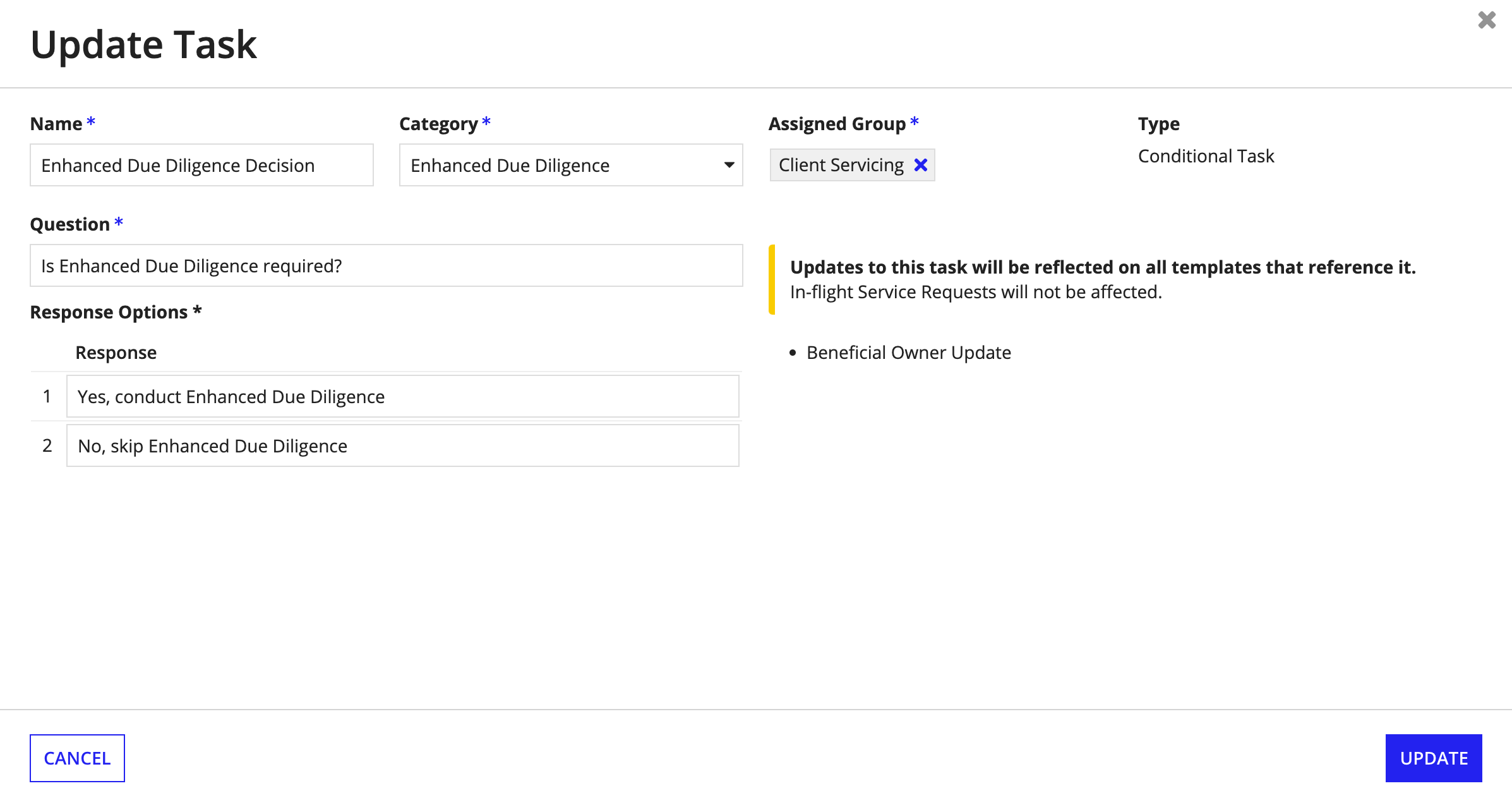
Note: The AS_TMG_INT_CONDITIONAL_TASK_RESPONSE_OPTION_MAX_COUNT constant controls the maximum number of response options you can configure on each conditional task. Increase the constant value to allow more response options per conditional task.
When a conditional task is added to a Connected Servicing workflow template, the Tasks page will require the conditional task to have at least as many dependent tasks configured on it as there are response options configured on the conditional task.
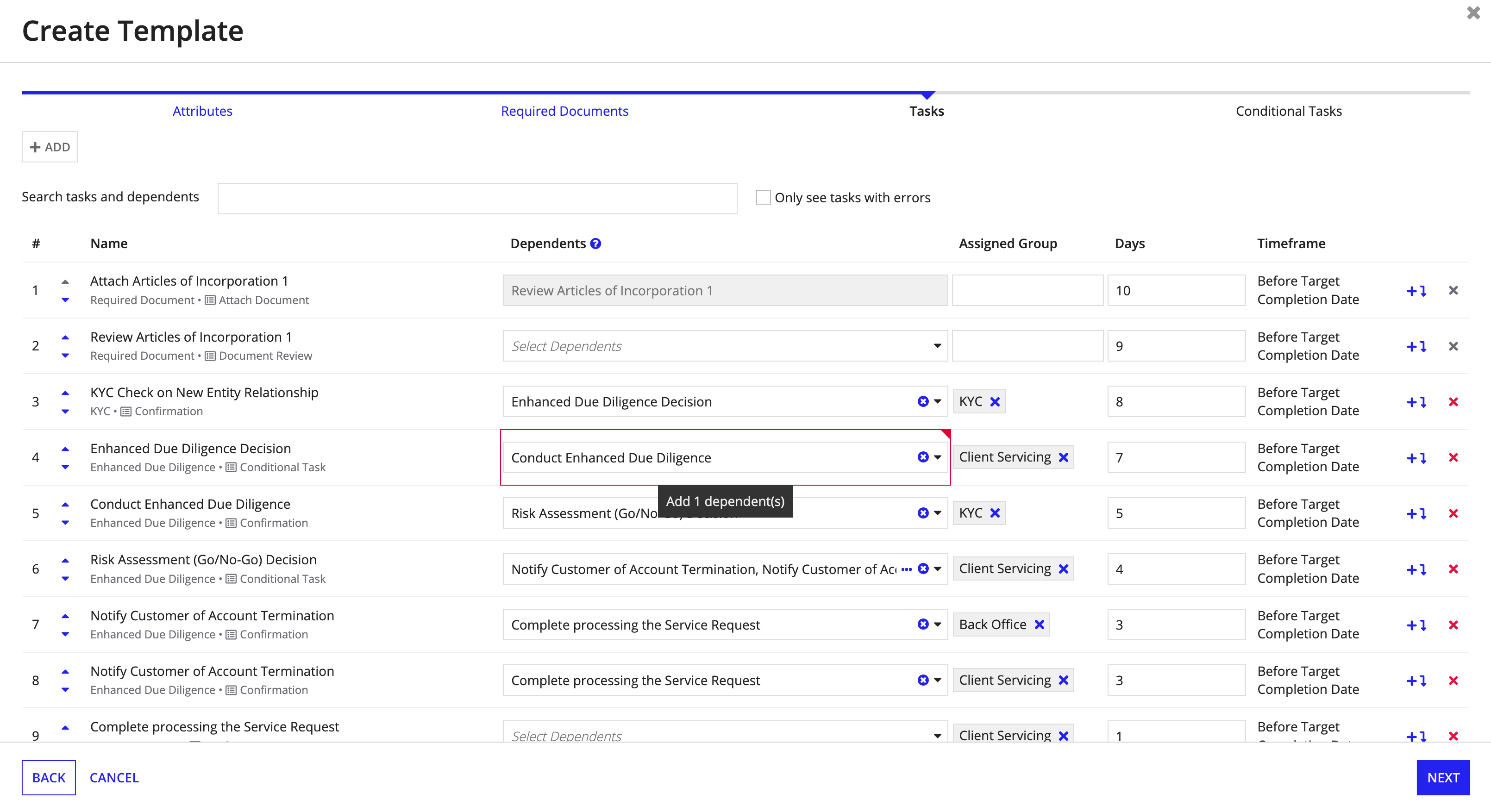
To configure the conditional task in the workflow template, you must complete the fourth step, Conditional Tasks. You must configure each response option for a conditional task in the workflow to a behavior and at least one dependent task on this step.
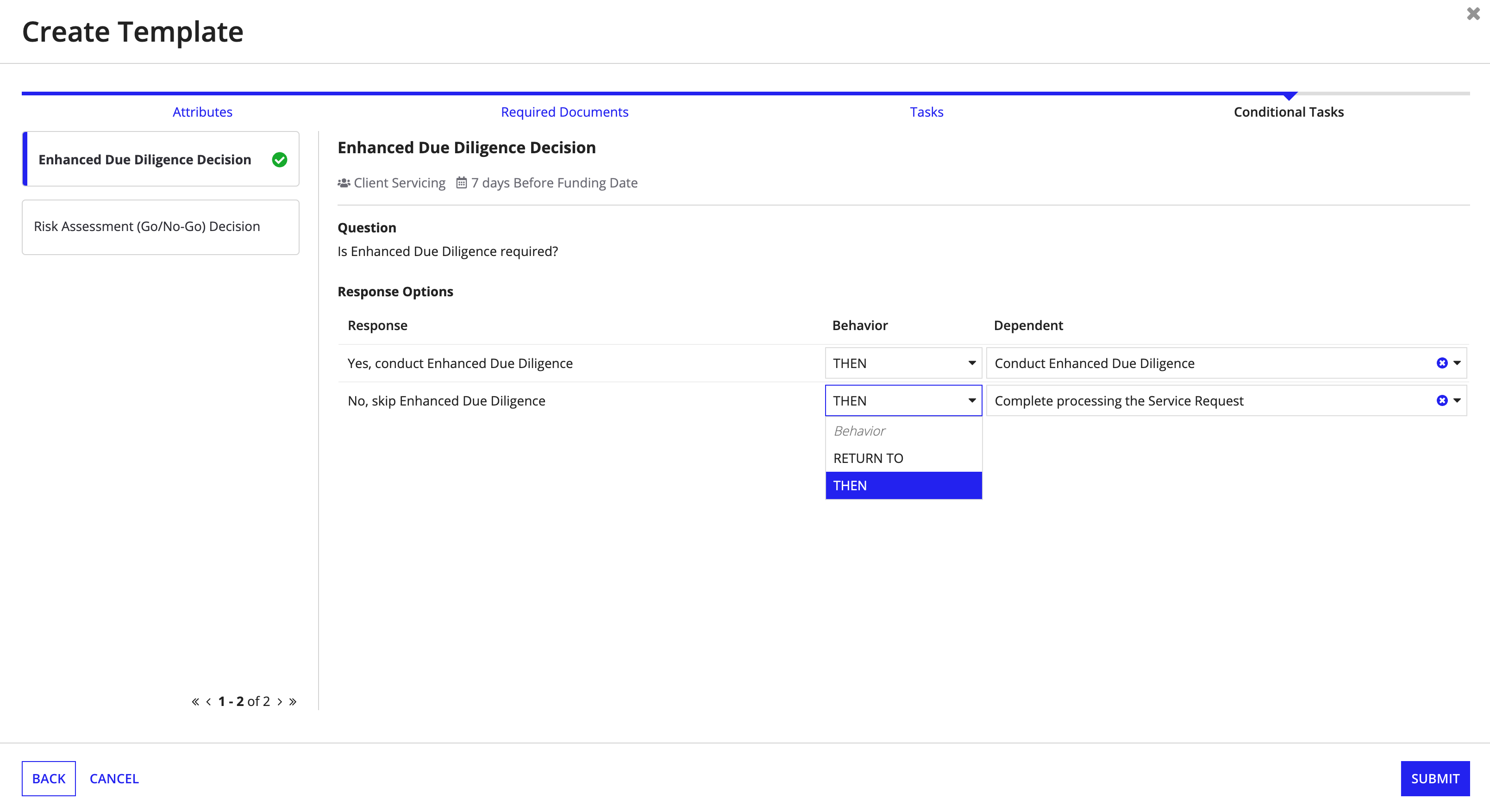
The behavior options are THEN and RETURN TO. A response option defined with THEN behavior can be mapped to one or multiple Dependent tasks. When a user completes a conditional task by selecting this response option, all dependent tasks mapped to it are automatically assigned for completion. Meanwhile, all dependent tasks mapped to other response options on the conditional task are marked not needed.
Alternatively, you can configure a response option defined with RETURN TO behavior to only one dependent task, which is expected to be a task completed earlier in the workflow. A typical use case for selecting RETURN TO behavior might involve using a conditional task as a review step to route the workflow back to an earlier task to complete that task or a group of tasks again.
Improved Service Request Summary Page for Greater EfficiencyCopy link to clipboard
As the primary interface for effectively orchestrating a customer's Service Request, the Service request Summary page is kind of a big deal. This release greatly improves the ability for internal users to quickly identify tasks requiring action by them and relevant Service Request information that can impact ongoing Service Request processing.
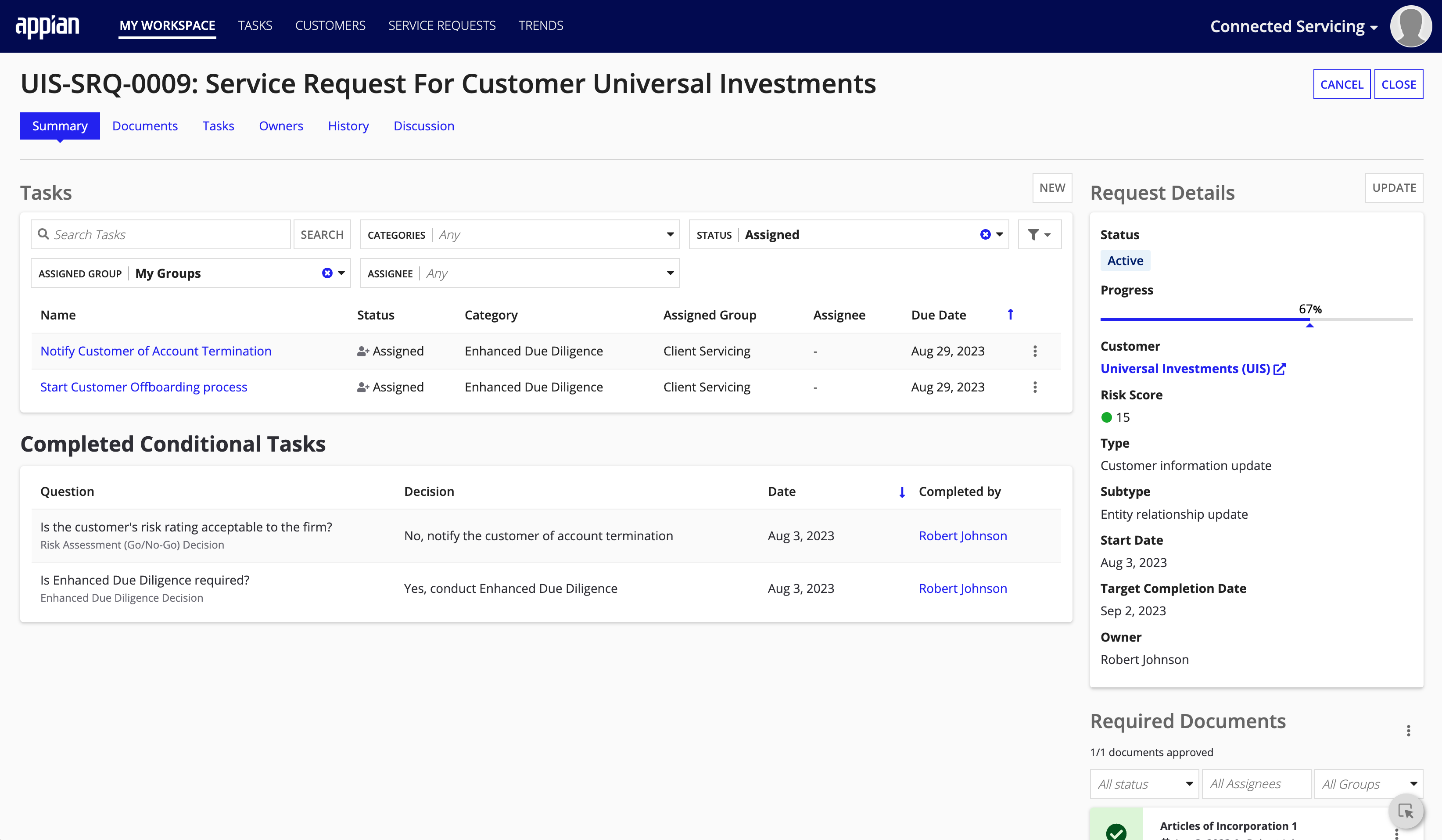
The Service request Summary page has been simplified to four sections:
- Tasks: A grid that focuses each user on the tasks currently requiring their attention with useful default user filters on the Status and Assigned Group fields. The default Assigned Group is My Groups, which is a custom option aggregating all of the user's group membership. If a user is interested in changing and saving a different set of default filters, they can do so easily with out-of-the-box Appian record filter capabilities.
- Service request Details: A section that combines the Service Request's status, task completion progress, and other pertinent attributes.
- Completed Conditional Tasks: A grid that puts important decisions made throughout the Service Request process at the user's fingertips by providing a current list of all completed conditional tasks in the Service Request with the most recently completed conditional task on top. This grid displays the conditional task question, selected response option, completion date, and name of the user who completed the task.
- Required Documents: A section that displays a list of all documents that must be collected and reviewed to complete the Service Request.
Get started nowCopy link to clipboard
Ready to get started? Check out Installing and Upgrading Connected Servicing.
